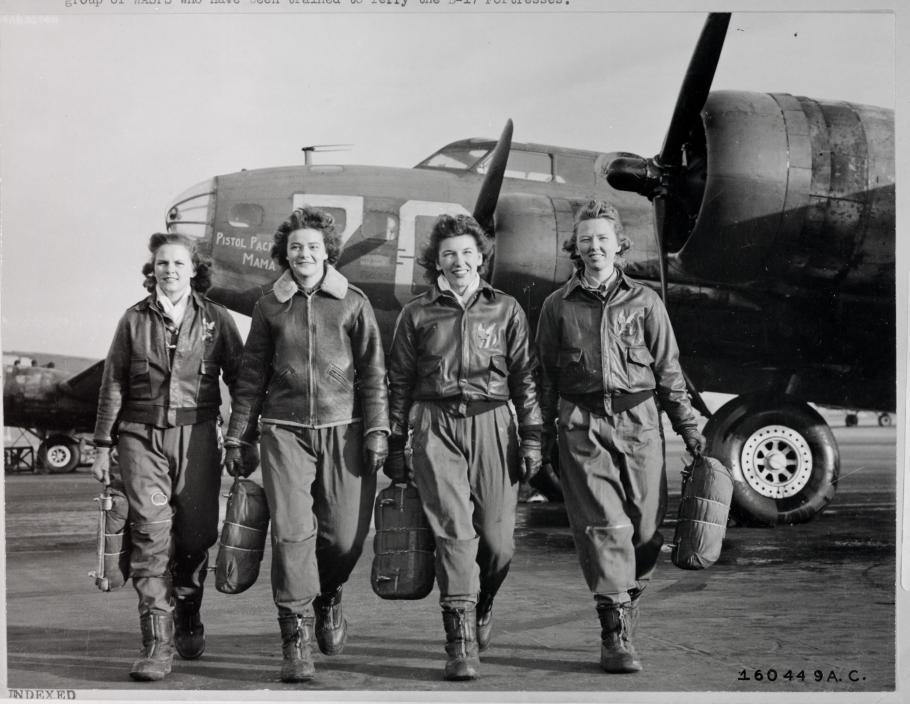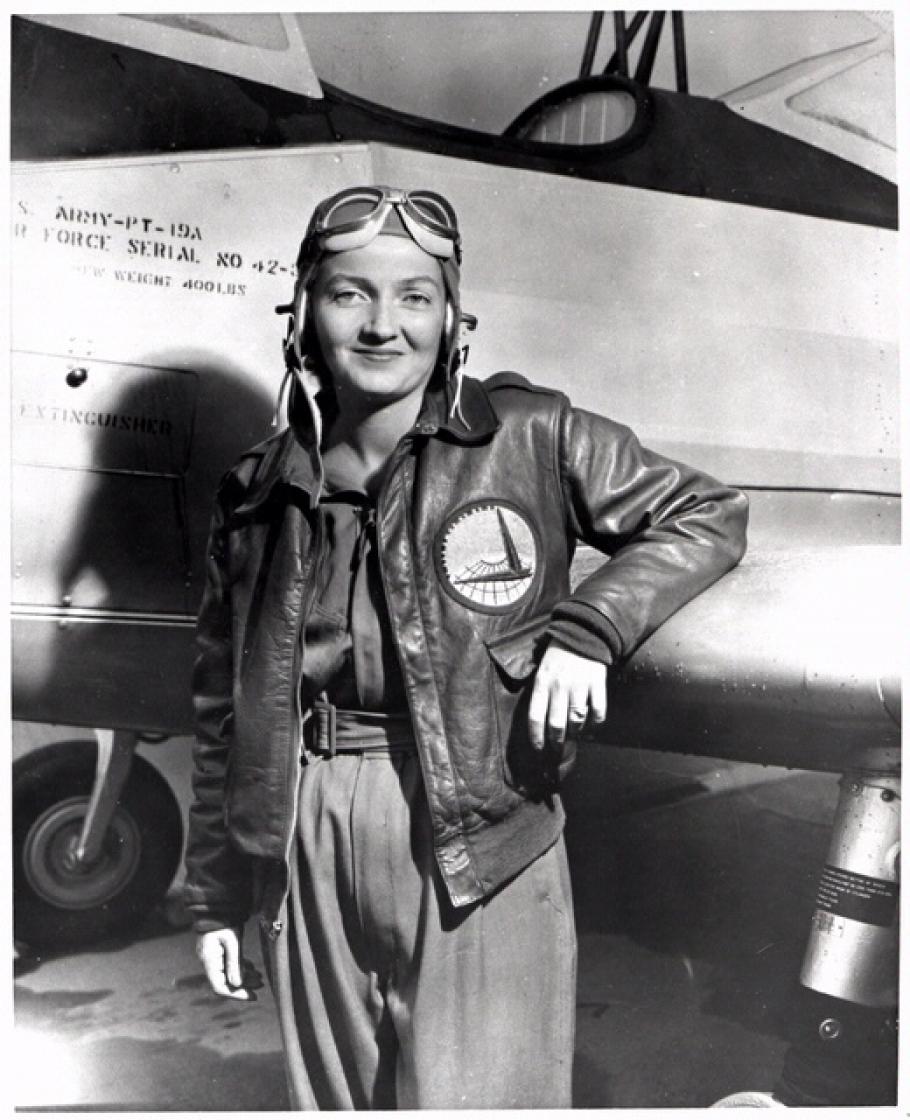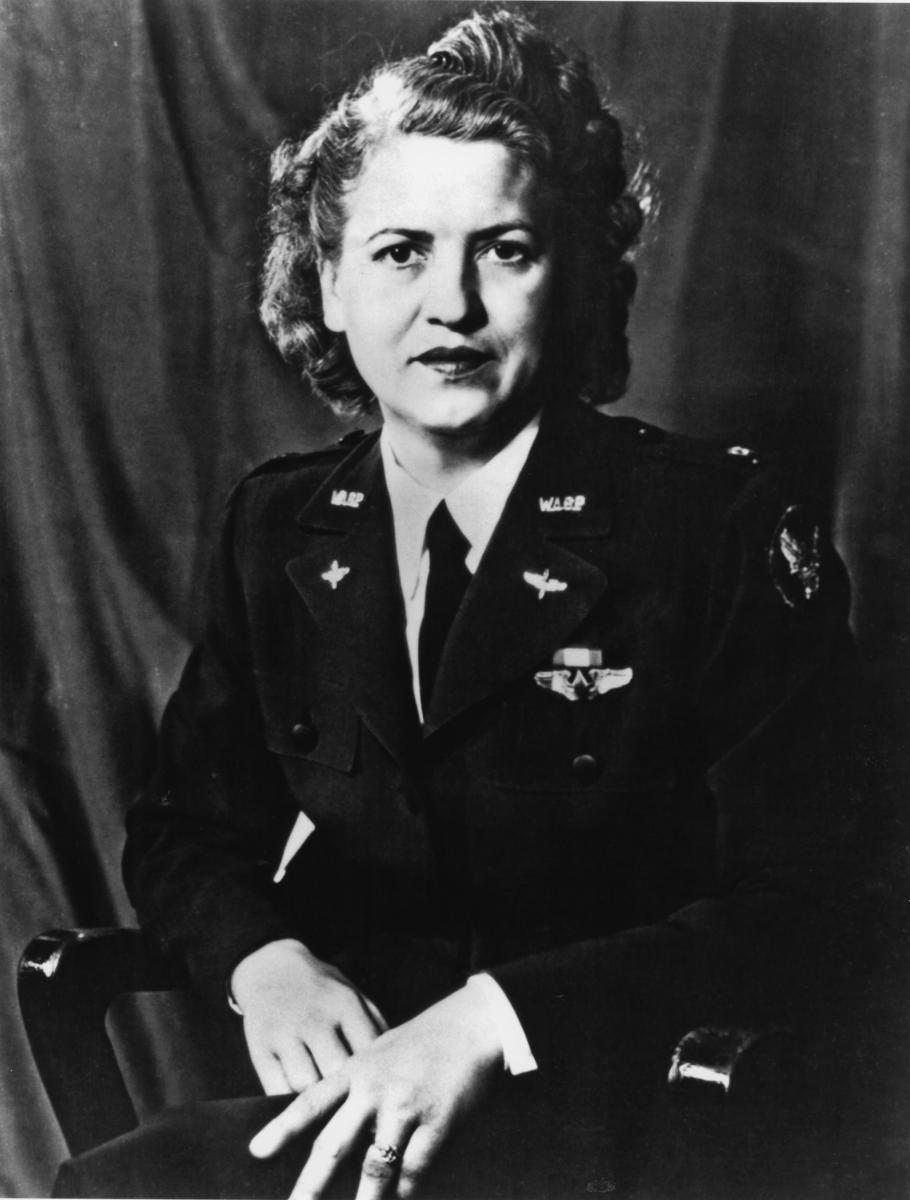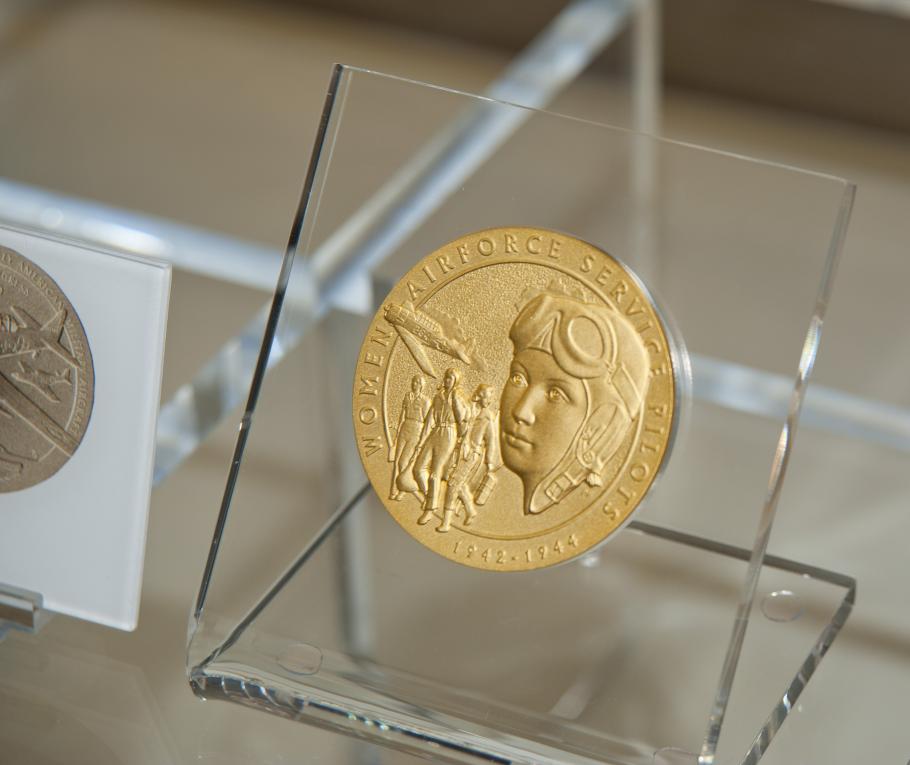The fearless WASP are at it again and if you know who I mean you will not be surprised at their latest mission – “flying” a float in the annual Tournament of Roses Parade on New Year’s Day 2014 in Pasadena, California. These intrepid women, the Women Airforce Service Pilots aka WASP, easily illustrate the theme of this year’s Rose Parade, Dreams Come True, as that is what happened for each woman selected to be a WASP. And although their dreams of flying for their country were realized for only a short but critical time during World War II, their dreams came true in the form of today’s female military pilots. Now, the WASP will be a part of a great American tradition thanks to their determination and to the continuing generosity of their supporters, the Wingtip to Wingtip Association.
In September 1942 two programs were established at the request of U.S. Army Air Forces Gen. Henry H. “Hap” Arnold for utilizing women pilots for the domestic war effort: the Women’s Auxiliary Ferry Squadron (WAFS) headed by Nancy Love and the Women’s Ferrying Training Detachment (WFTD) led by Jacqueline Cochran. On August 5, 1943, the two organizations merged into the Women Airforce Service Pilots (WASP) with Cochran as director. The increasing deployment of military pilots to the Atlantic and Pacific theaters resulted in the need for more pilots to ferry the increasing number of military aircraft from U.S. manufacturing facilities to bases and points of embarkation and women wanted to be a part of the effort. Cochran and Love had very different strategies but the same goal – to create a women’s air corps, a pool of qualified female pilots to deliver military aircraft to wherever they needed to go, and free up male pilots for combat duty. As head of the WAFS, Love initially recruited 27 highly experienced women pilots between the ages of 21 and 35 with high school diplomas, a commercial license, and minimum of 500 hours of flight time. After their flight checks, the WAFS immediately began repositioning military aircraft. Meanwhile Cochran’s Women’s Ferrying Training Detachment (WFTD) recruited female pilots with as little as 35 hours and gave them a 23-week flight training program, the same as male cadets and with military instructors, in a segregated group at Avenger Field in Sweetwater, Texas (after a brief stint in Houston) where they followed strict military procedures including drilling and taking an oath of allegiance. The women wore ill-fitting male mechanics suits, known as Zoot suits, or pants and A-2 leather jackets until Cochran oversaw the design of official WASP uniforms, the color known as Santiago Blue, on which they could pin their silver WASP wings. The important difference was that the women were civilians; militarizing them was too controversial. Still, more than 25,000 women applied and 1,830 were selected for the program. The first WFTD class graduated in December 1942.
Ultimately 1,102 women flew 60 million miles for the paramilitary WASP and the U.S. Army Air Forces. They delivered 12,650 aircraft representing 78 different types. They flew every aircraft in USAAF inventory including high-performance pursuit aircraft, such as the P-51 Mustang, and large four-engine B-17 and B-29 bombers. In addition, they towed targets for cadet fighter training, transported military personnel and cargo, and flew engineering tests flights, including one in the second model of America’s first jet, the YP-59. WASP also flew radio-controlled target planes (early drones), flight tested repaired aircraft or became flight instructors in aircraft or Link trainers/simulators. In essence, they did or flew whatever was asked of them. Throughout the program, the accident and fatality rates for women and men were the same. Thirty-eight women gave their lives in the course of duty to their country but because they were civilians, their families, and in some cases their fellow WASP, had to pay the funeral expenses. The WASP program ended abruptly in December 1944 after a bitter fight over the possible incorporation of the program into the military. With the end of the war in sight, perceptions were that women were no longer needed or even wanted—military pilots (men) would return to reclaim flying jobs. In addition, a headstrong Cochran, determined to remain in charge of any women’s air corps, complicated efforts to merge the WASP with other existing female military units, such as the Women’s Army Corps (WACs), in which they would have served as experienced military pilots. The dreams of WASP were over. The WASP went home, most married and raised families; many continued to fly but only a few established real aviation careers. But the legacy of the WASP remained as they had soundly proven that women could fly military aircraft. Still, it took more than 30 years of social, cultural, and legal changes to allow American women to train as military pilots, beginning in 1977, albeit for limited aircraft and flight duties, i.e. no combat. In fact, women have only recently been widely accepted as fully-vested military pilots. The first installment of the nation’s debt to the WASP was paid in 1977 with a bill authorizing retroactive partial veteran status. Since then, with continuing World War II anniversary celebrations, the WASP have received acknowledgment and gratitude for their service. Then, in 2009, President Obama signed legislation awarding the Congressional Gold Medal, the nation’s highest civilian honor, to these extraordinary women who served their country as first-rate stateside pilots during World War II.
The National Air and Space Museum is honored to display the Congressional Gold Medal awarded to the WASP in March 2010 at the U.S. Capitol (each WASP or her family received a bronze medal). Sitting on a shelf in the Military Women’s Case at the Museum’s Udvar-Hazy Center, it is surrounded by uniforms and memorabilia of women of the WASP, the Women’s Auxiliary Ferry Squadron (WAFS), the Air Force (USAF) and the Navy (USN). WASP uniforms and flight materiel are also displayed in the flagship Museum’s World War II gallery. Riding the float in the Rose Parade will be a walk in the rose garden for the surviving WASP but more importantly it will be their largest public recognition ceremony ever — the estimated worldwide viewing audience is 74 million people! Be one of them on New Year’s Day! For further information on the WASP and their Rose Parade Float project please contact http://fifinella.com/index.htm or Kate Landdeck. Texas Woman’s University Libraries serves as the official repository for WASP archives, oral histories and collections.



